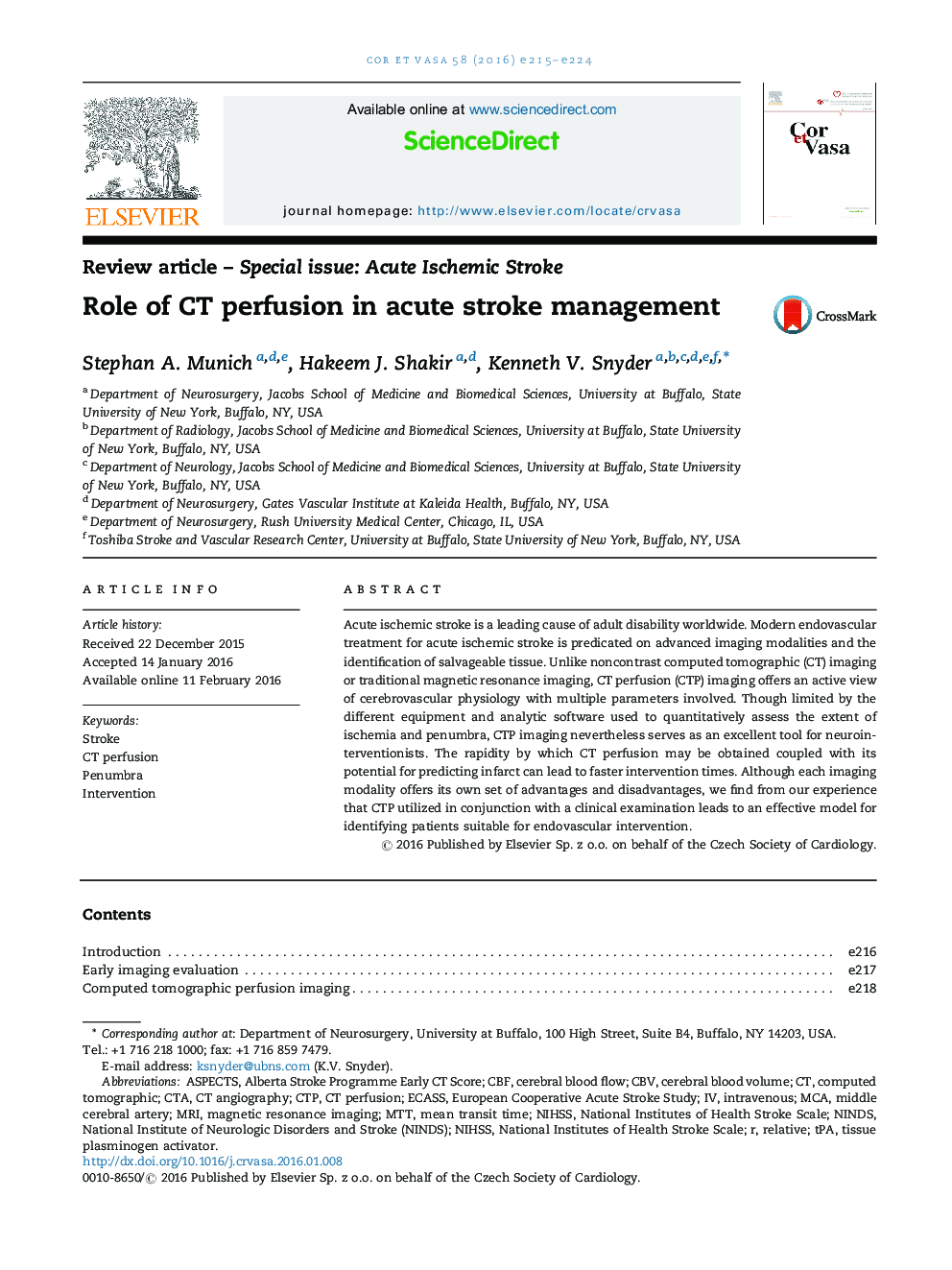| Article ID | Journal | Published Year | Pages | File Type |
|---|---|---|---|---|
| 2728311 | Cor et Vasa | 2016 | 10 Pages |
Acute ischemic stroke is a leading cause of adult disability worldwide. Modern endovascular treatment for acute ischemic stroke is predicated on advanced imaging modalities and the identification of salvageable tissue. Unlike noncontrast computed tomographic (CT) imaging or traditional magnetic resonance imaging, CT perfusion (CTP) imaging offers an active view of cerebrovascular physiology with multiple parameters involved. Though limited by the different equipment and analytic software used to quantitatively assess the extent of ischemia and penumbra, CTP imaging nevertheless serves as an excellent tool for neurointerventionists. The rapidity by which CT perfusion may be obtained coupled with its potential for predicting infarct can lead to faster intervention times. Although each imaging modality offers its own set of advantages and disadvantages, we find from our experience that CTP utilized in conjunction with a clinical examination leads to an effective model for identifying patients suitable for endovascular intervention.
